In the area in which I live, there is a large population of poisonous snakes, namely rattlers. They are good in the sense that they consume large numbers of rodents that cause other problems. Personally, I have hiked this country for years and encounter rattlesnakes on various occasions, but have never felt threatened. I merely bypass the snake or if they are on a popular trail, I will throw something at them to get the off the trail. I see no need to kill them unless they are an immediate threat or I want the food.
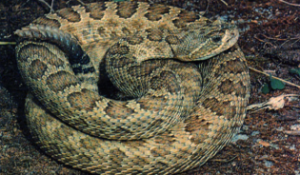
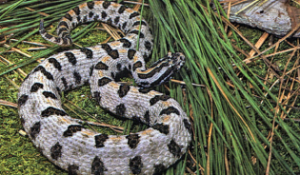
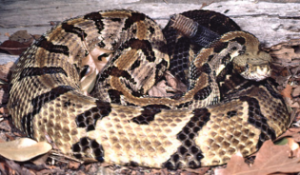
In North America, there are four poisonous snakes that are divided into two classes, Coral snakes and pit vipers. Pit vipers include rattlers, cottonmouths (water moccasins) and copperheads.
Recognizing poisonous snakes in the United States is fairly easy.
- First look at the colors, some poisonous snakes like the coral snake have bright colors. The coral snake colors are always red, then yellow (thinner band), then black. Coral snakes and the similar looking (but harmless) King snake (red snout), are often mistaken for each other. Here’s how to remember: “Red touch yellow, kill a fellow.” (Deadly Coral snake) “Red touch black, friend of Jack.” (Harmless King snake)
- Coral snakes range from North Carolina down through Florida and over to Arizona.
- Pit vipers have a triangular shaped head.
- A pit viper will have a pit between the snake’s eyes and their nostrils. This is a heat-sensitive pit that helps them locate warm-blooded prey.
- If it has a rattle, it is a poisonous snake. Not all rattlers have a rattle, especially young ones.
- Cottonmouths or copperheads are water snakes. Only poisonous water snakes swim with their entire body on the surface of the water.
- Cottonmouths have a thick heavy body and are brown in color.
- Copperheads cause the most snakebites. Copperhead bites are painful, but rarely cause death.
- Copperheads are normally tan to copper in color.
- There are several types of rattlesnakes found in North America. They are found in all the continental states (except Alaska) and Southern Canada.
- Rattlesnakes vary in size from pygmy snakes to ones that will reach 6 ft in length. There colors vary mostly in shades of brown. Some will have diamond shapes on their backs.
- The rattlesnakes all have the distinctive triangle shaped head.
- If bitten check the bite mark.Two close-set puncture marks would indicate that the snake has fangs and is poisonous. If it leaves a ragged bite mark without the two close-set puncture marks, it is non-poisonous.
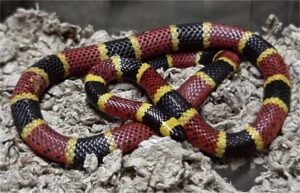
Coral snake
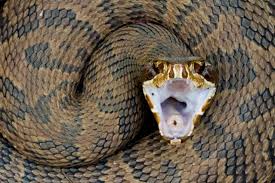
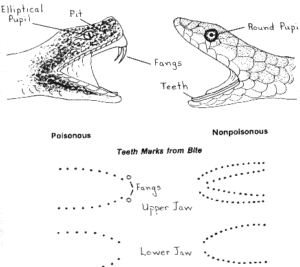
Now you can see that even with these guidelines you should learn more about the snakes that are in you operating area. In particular, learn which rattlers live near you.
Howard

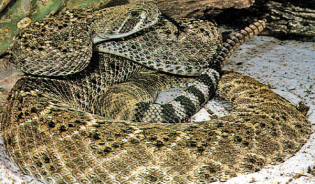

Most rattlesnakes I have encountered have not rattled. On occasion they have given a goose hiss, but a long piece of wood will lift them out of the way if they are on a dirt road. Walk slow, give them time to get away, or sound off, and always always look where you put your feet; even when you get in or out of your vehicle. Yep, almost stepped into that one once.